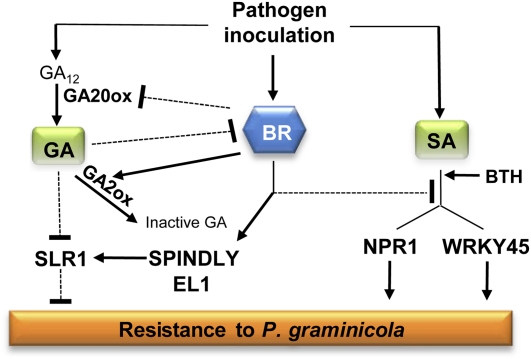Figure 5.
Model illustrating how BR, SA, and GA and defense-related cross talk among this triad of stress hormones molds rice immunity to P. graminicola. Perception of P. graminicola leads to pronounced increases in endogenous BR levels and resultant activation of BR signal transduction. This pathogen-triggered BR action, which likely results from combined induction of de novo BR biosynthesis, attenuation of negative feedback regulation, and potentiated derepression of BR signaling, plays a dual role in promoting susceptibility. On the one hand, BR antagonizes effective SA-mediated defenses by interfering downstream of SA accumulation, but upstream of OsNPR1 and OsWRKY45. On the other hand, BR dampens effectual immune responses directed by GA. Operating at both the level of biosynthesis regulation and signal transduction, this BR-GA antagonism leads to indirect stabilization of the DELLA protein SLR1. Sharp, black lines represent positive effects; blunted, dotted lines depict antagonistic interactions. [See online article for color version of this figure.]

